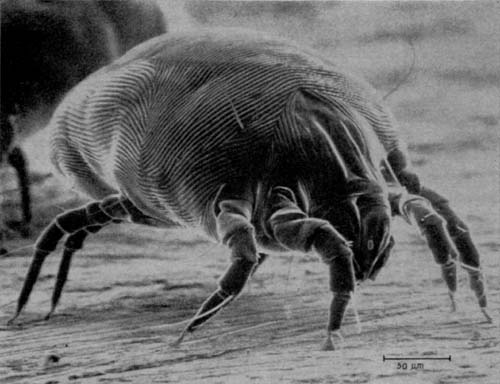For some, like those coping with a wheat allergy or celiac disease, pulling out a skillet to make fresh pancakes is out of the question unless special care is taken to select a well-researched gluten-free flour.
But for individuals with no such restrictions, a fresh, fluffy pancake can still mean a jab with an epinephrine auto-injector and a trip to the ER. How so?
We’re talking about pancake syndrome, otherwise known as oral mite anaphylaxis (OMA). OMA is characterized by severe allergic symptoms occurring immediately after eating foods made with mite-contaminated wheat flour. The syndrome, more prevalent in warm, humid environments, is often triggered by pancakes, hence the moniker. (A variety of this syndrome that occurs during physical exercise and is named dust mite ingestion-associated exercise-induced anaphylaxis.)
Because cooked foods are able to induce the symptoms, heat-resistant allergens are suspected to be involved.
A summary of available literature published in 2012 in The Journal of Allergy and Clinical Immunology listed the specific species of mites that have been linked to OMA, including Dermatophagoides pteronyssinus, Dermatophagoides farina, Blomia tropicalis, Suidasia medanensis, Aleuroglyphus ovatus, Tyrophagus putrescientiae and Tyreophagus entomophagus.

Risk Factors
The study identified the following risk factors for OMA:
- previous atopic disease;
- mite sensitization;
- NSAID hypersensitivity;
- ingestion of pancakes or other meals containing wheat flour; and
- ingestion of more than 1 mg of mite allergen (>500 mites per gram of flour).
As only a subset of patients will develop OMA, investigators have considered other possible underlying factors predisposing these subjects to react acutely to mite-contaminated foods. Currently, there is no evidence supporting any of the other usual susceptibility factors for anaphylaxis, such as mast cell activation syndrome, increased oral/gastrointestinal mucosal permeability, or pre-existing mite-specific IgE levels.
Diagnosis
OMA should be suspected in patients with acute symptoms during or immediately after eating foods prepared with wheat flour. Because of this, physicians often dismiss the syndrome as wheat allergy.
Physicians are advised to consider OMA in patients presenting with acute angioedema or laryngeal edema associated with the ingestion of pancakes, particularly if the event occurred in or the flour originated from tropical or subtropical climates.
The syndrome can be confirmed in patients meeting the following criteria:
- compatible symptoms occurring after eating foods prepared with wheat flour;
- previous history of rhinitis, asthma, atopic eczema, or food allergy;
- demonstration of mite-specific IgE in vivo (immediate-type skin tests) or in vitro;
- positive skin test response induced by an extract of the incriminated flour;
- negative skin test response to commercial wheat extract and to an extract of uncontaminated flour;
- tolerance to other foods made with uncontaminated wheat flour;
- microscopic identification of mites in the suspected flour;
- presence of mite allergens in the flour, as demonstrated by means of immunoassay; and
- aspirin/NSAID hypersensitivity.
Prevention
Storing flour in sealed plastic or glass containers at low temperatures (such as in the refrigerator, especially in warm climates) will likely prevent OMA.
Other environmental measures taken in the homes of patients diagnosed with OMA include improving the air quality using air purifiers, decreasing humidity, cleaning and disinfecting furniture and floors, and using acaricides — pesticides used to kill ticks and mites.
Move Over Alpha-Gal… Pork-Cat Syndrome is Another Food Allergy You Can “Catch”





